Volkswagen’s ID.4 might be one of the most delayed vehicles to hit Australian shores this year.
Despite the mid-sizer having launched way back in 2020 in Europe with some success, its delay in Australia has been much publicised as rivals have been much faster to move into this electric mid-size SUV space.
It's not lost on Volkswagen that the ID.4 is launching into a competitive market with some solid competition, and as such, we’re only getting the latest and greatest version.
Does it have what it takes to stay competitive and earn a place on your electric SUV shopping list? We went to its Australian launch to find out.
Volkswagen ID.4 2025: PRO
| Engine Type | 0.0L |
|---|---|
| Fuel Type | Electric |
| Fuel Efficiency | 0.0L/100km (combined) |
| Seating | 5 |
| Price From | $59,990 |
| Safety Rating |
|
Price and features – Does it represent good value for the price? What features does it come with? 8/10
8 / 10
The ID.4 initially arrives in a single variant in Australia, and it might surprise you how well it’s priced considering the amount of standard equipment it includes.
While Volkswagen is no stranger to sitting in a semi-premium pricing bracket, the single ID.4 Pro grade arriving at $59,990 before on-road costs is priced within a few thousand dollars of some of the most popular rivals.
For example, it’s just $1090 more expensive than the incoming new Tesla Model Y Rear-Wheel Drive, and while the base Kia EV5 is a few thousand dollars cheaper, the equivalent Long Range Air grade is actually $1180 pricier.

The bigger threat might be from the XPeng G6 which offers a similar driving range with more radical styling for $100 less, although there's also now a whole price bracket below for electric mid-sizers, which includes the Leapmotor C10 (from $43,888), and Geely EX5 (from $40,990).
So, it lacks the circa-$10,000 premium that electric models from ‘legacy automakers’ used to have, but it’s also not vying for the most affordable option in the space.
Still, this ID.4 is the best-equipped version yet, and we get one of the highest-grade versions. Not only does the Pro get the largest battery option on offer, combined with the more efficient rear-wheel-drive motor option, but it also dazzles on the standard equipment front.

On the outside there are 19-inch alloys and Volkswagen’s signature ‘Matrix’ LED headlights, while on the inside the ID.4 features a 12.9-inch multimedia touchscreen with Apple CarPlay and Android Auto connectivity alongside a 5.3-inch instrument cluster, panoramic sunroof, ambient interior lighting and electrically adjustable and heated front seats with a message function.
These are clad in a blend of leather and 'microfleece' and feature a memory function.
Other standout features include tri-zone climate control (a VW Group signature), adaptive dampers with adjustable settings, a sportier ‘progressive’ steering tune as standard, and an electric tailgate.

While it might not have an enormous central screen or headline 800-volt battery specs, it’s hard to argue with the standard inclusions in the ID.4. The options list is short, limited to just premium paint options ($1000) or an exterior styling pack ($900).
Later in the year, this Pro version will be joined by a higher-grade dual-motor GTX, but expect it to be significantly more expensive. The ID.5 coupe spin-off launches solely in GTX guise, but it starts from a less competitive $72,990 before on-roads.
It’s also clear this price point is a deliberate move by VW to keep some of its existing Tiguan buyers who want an EV. After all, the price of this launch version of the ID.4 (which the brand expects to be the most popular grade) is not priced far off its best-selling Tiguan, the 162TSI R-Line at $60,590.
Design – Is there anything interesting about its design? 7/10
7 / 10
When it launched the ID.4 was a significant departure from the more angular styling of VWs at the time, particularly the likes of the boxy Tiguan combustion equivalent.
Now with a few years to digest the design and how it compares to its rivals, it seems a little conservative.
This is perhaps a deliberate move from VW as it attempts to avoid some of the more wild and unconventional electric vehicle designs worn by newer players in this space, appealing to both a more traditional VW buyer and others that want to be a little less shouty about their EV.

While it plays the design game more safely than some rivals, I also think it has a resolved nature to it which helps to set it apart. The dance of coloured styling elements with a tri-tone finish of silver and black highlights is nicely executed, as are the white-tinged VW badges which help set it apart from the rest of the brand’s range.
Inside, VW has followed a similar trend to many other vehicles in this space, with a wide-open cabin and a dashboard dominated by a large central touchscreen. Unlike some new-age rivals in this space, VW’s 12.9-inch panel isn’t as all-consuming as some fifteen-plus-inch units, which lends the cabin a slightly more traditional feel for better or worse.

It’s also good to see the brand continue to offer a digital instrument panel perched atop the steering column, although it’s minimalist in terms of what it displays, especially compared to the cluster in this car’s more premium Audi Q4 e-tron relation.
The seats look and feel good, and while the dash is largely made of hard-finish plastics, there's a clever smattering of soft-touch finishes in the doors and atop the dash, in most of the places you’re likely to touch.
The ID.4 feels a bit more like a car rather than a tech product, which I think some buyers will appreciate.


Practicality – How practical is its space and tech inside? 8/10
8 / 10
VW has taken the opportunity with the ID.4 and its MEB platform to re-think cabin practicality. In the cockpit this means the standard raised console we usually see in a lot of mid-sizers has been replaced with a more modular floating console with some neat touches.
There's also a wide and spacious feel to the cabin thanks to the removal of structural elements usually reserved in combustion vehicles for things like the transmission or driveline tunnel.
The result is a big and airy cabin, reinforced by the big panoramic roof and more upright seating position.

Because there’s no centre console box, the front chairs also have drop-down armrests, which combine nicely with their generous side bolstering and padding to make for an armchair-like feel for front occupants. Lovely.
The touchscreen looks good and operates largely without any kind of lag, plus the layout is reasonable to work with. The main annoyance is using the convenient shortcut functions across the top of the screen for the settings menu or phone mirroring. These touch elements are quite small, forcing you to take your eyes off the road for a moment to interact with them. The same story goes for the touch-based sliders used for volume and climate controls. It’s simply never as good as physical buttons, and again, distracting to use on the move.
The console has impressive modularity. Up front there’s a tray which can either be fitted with removable dividers for a range of configurations, or you can slot a dual bottle-holder piece in there. This can be swapped into the lower section of the console, which also hides a cut-out for a wireless charger and two USB-C ports, and this lower area also has a sliding cover to keep everything tidy.

Meanwhile the back seat offers a spacious layout. At 182cm tall I have plenty of airspace for my knees behind my own driving position, and the width of the cabin is especially evident, with the centre seat position seemingly capable of accommodating a full-size adult if necessary.
They’ll also have somewhere to put their feet thanks to the flat floor, with the only limiting dimension being headroom. If you are taller than me you might be touching the roof, which dips down a little in the back to accommodate the rolling blind for the panoramic sunroof. At least it has one of these, unlike many other mid-size EVs.
The soft trims in the doors continue, but perhaps the best thing about the rear seats is the built-in strong contouring which gives the outboard positions a good level of comfort and genuine side bolstering.
While rear passengers benefit from a rare third climate zone, the adjustable vents and touch panel for this is located almost on the floor, making it hard to reach when you’re strapped in. It’s the same story for the dual USB-C charging ports.
For storage there’s large bottle holders in each door, three more in a drop-down armrest, as well as phone-sized pockets and bigger pockets on the backs of the front seats. Behind the drop-down armrest there’s a ski-port. Very Euro.
The boot measures 543 litres which seems about right for this segment. It comes with space under the floor for the storage of charging cables (of which, VW throws in both a wall socket version and a Type 2 to Type 2 cable for public charging) and an elastic net which is an underrated feature for stopping objects moving around while you’re driving. Like many other mid-size electric cars, there’s no spare wheel, just an inflator kit.
The ID.4 has no room left in its design for a frunk, which is an arguably gimmicky feature that many rivals have, although I must say there is the odd occasion where I have found them useful.

Under the bonnet – What are the key stats for its motor? 7/10
7 / 10
The version of the ID.4 we’re finally receiving in Australia has major upgrades to its motor and battery. Rather than the lacklustre 125kW/310Nm of the original version, this new one puts out a much more impressive 210kW/540Nm.
The ID.4 Pro is rear-wheel drive for efficiency and packaging reasons, although the dual-motor ID.4 GTX will arrive before the end of 2024 for those looking for the additional power and handling boost this version will offer.

Efficiency – What is its driving range? What is its charging time? 7/10
7 / 10
The headline number you’re searching for here is 544km. This is the WLTP driving range for the ID.4 Pro, and it’s plenty for both daily commuting or even intercity trips.
It compares well to many of its rivals, thanks to an upsized 77kWh battery pack, with more sustain (at least on paper) compared to the BYD Sealion 7 and Tesla Model Y RWD and it’s nearly on par, but a few kilometres short, of the Tesla Model Y Long Range and Kia EV5 Air Long Range.

Charging has also been significantly upgraded. On a DC pylon it can charge at a maximum rate of 175kW for a 10 to 80 per cent charge time in 22 minutes, conditions allowing.
Meanwhile an 11kW max speed on an AC charger should see it charge up from 10 per cent to full in around six hours.
While these specs are good, the ID.4 doesn’t currently offer vehicle-to-load technology or vehicle-to-grid capability, which is a bit of a shame now this tech is becoming more common.
Driving – What's it like to drive? 8/10
8 / 10
The ID.4 may be a dedicated electric car, but it still has so many of the characteristics that make VWs great to drive, although it’s a distinct experience from what a Tiguan buyer may be used to.
It starts with the excellent touchpoints, visibility and adjustability for the driver.
The steering still has the same fine balance of feedback and speed VWs are known for, granting the ID.4 an instantly pleasing handling feel. On top of this, it is distinct from a lot of EVs in this class in that attention has been paid to ride quality.

The Pro sits on EV tyres with a sensible amount of sidewall, which helps to soften the ride, but the suspension itself is also remarkably merciful over the sorts of bumps and imperfections common on Australian roads.
It’s certainly one of the more comfortable EVs I’ve driven, but because of this it also proved to be prone to some boatiness when upset mid-corner, as the weight of the batteries become evident.
Thankfully, this can be tamed by tightening up the suspension response via either the drive modes, or manual override in the settings screen, which is something many rivals don’t have. While the firmest setting can be a little hard, it’s nice you can tailor the experience to the road, not being stuck with a too hard tune (see: Tesla Model Y) or a too soft tune (see: Leapmotor C10), with all ride settings landing somewhere between.

While the ID.4’s power figures and straight-line performance look good on paper, it doesn’t feel as violently rapid as some EVs in this class. Don’t expect the breakneck accelerator response present in the Model Y, even in sport mode, with VW choosing to imbue the ID.4 with a sensible, if a little tame, roll-on for its electric motor.
It makes it difficult to accidentally break traction, and it gives the car an overall more predictable feel, but don’t expect to be able to scare your friends in the same way a Tesla can.
It’s also quite a different experience compared to a Tiguan. While the combustion SUV feels more like a giant hatchback with cat-like reflexes and sharp responsiveness from the front-end, the ID.4 has a more leisurely and luxurious feel, owing to its additional weight and rear-wheel-drive layout.

It might not be a corner carver in the same sense as the Tiguan, but it’s a better country road and freeway tourer. Not necessarily worse, just different.
For what it’s worth, the ID.4 is not a particularly exciting car to drive, but it is refined, well tuned, and flexible to a range of scenarios, which can’t be said for all of its rivals.
Warranty & Safety Rating
Safety – What safety equipment is fitted? What is its safety rating? 8/10
8 / 10
The ID.4 Pro comes equipped with a full array of modern active safety equipment, including autobahn-speed auto emergency braking (AEB), lane keep assist, blind spot monitoring with rear cross-traffic alert, rear auto braking, a kerb view function, a 360-degree manoeuvring camera, and adaptive cruise control.
Perhaps the most important thing for those weighing up an ID.4 against a newcomer rival is the calibration of this safety equipment, which is excellent. Unlike some rivals from Korea and China which have overbearing safety systems, the ID.4’s suite didn’t interfere with the driving experience once in my two days of driving.
The ID.4 has a maximum five-star ANCAP safety rating, although this rating only applies to variants sold in New Zealand (where it has been on sale longer). It is equipped with seven airbags including dual front, dual side, dual curtain, and a front centre airbag.

Ownership – What warranty is offered? What are its service intervals? What are its running costs? 7/10
7 / 10
To tempt electric car skeptics, VW has a range of ownership perks for the ID.4.
What hasn’t changed is the factory warranty which stands at five years and unlimited kilometres, although it does get a separate and industry-standard eight-year and 160,000km warranty for the high-voltage battery pack.
From there though, things are different. The ID.4 only needs to see a workshop once every 24 months or 30,000km, and as usual, servicing can be packaged up to secure the best price at the time of purchase. This is either a six-year/90,000km package ($1785 or $298 per year), an eight-year/120,000km package ($2350 or $294 per year), or a ten-year/150,000km package ($2890 or $289 a year).

VW also points out it has designed its battery pack to be serviceable rather than sealed-for-life or packaged so densely that modules cannot be easily removed, and it guarantees 10 years of battery supply from the end-of-production for the ID.4, with 15 years of repairability to help ease the minds of those convinced modern EV batteries won’t last the distance.
But wait, there’s more, apparently, with VW teaming up with AmpCharge to offer a 7kW home charging unit (which can be themed to match the colour of the car). The first 500 registrations can have one of these installed for free (with a claimed value of $1899).
A five-year warranty will also cover this charging hardware.
Verdict
It might have been accidental good fortune that Volkswagen Australia has had to wait so long for the ID.4 because this version is by far the best yet.
It’s familiar but new to drive, tidily styled, with the refinement and finish you expect from such a storied automaker.
The brand has also done an admirable job of pricing and specifying this electric mid-sizer just right so it should definitely be on your list of considerations, even with such a strong field of competition in 2025.
Note: CarsGuide attended this event as a guest of the manufacturer, with travel, accommodation and meals provided.
Pricing Guides

Range and Specs
| Vehicle | Specs | Price* |
|---|---|---|
| PRO | Electric, 1 SPEED AUTOMATIC | $59,990 |
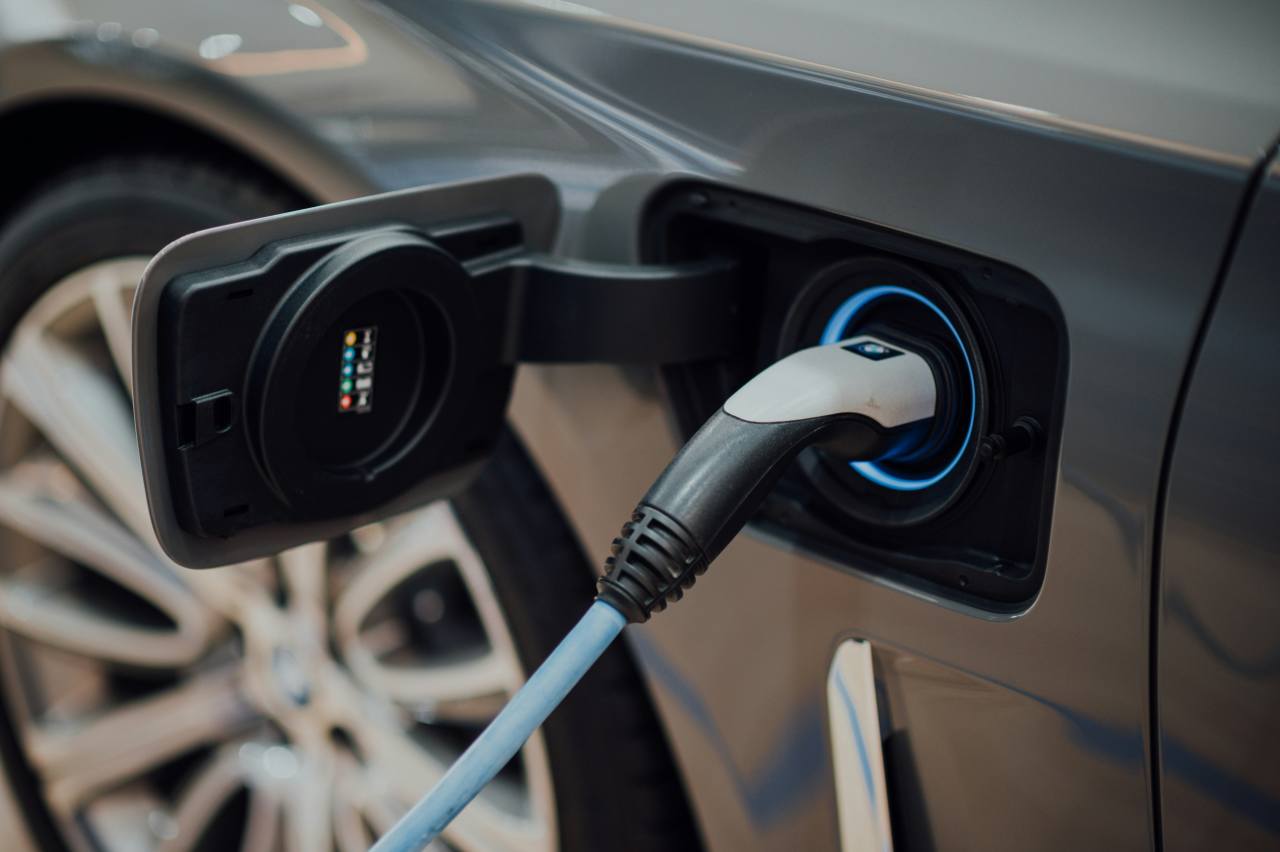




















.jpg)
.jpg)

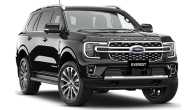










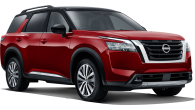



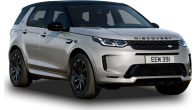
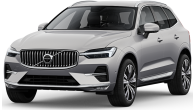


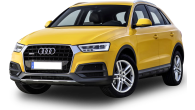




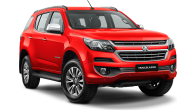


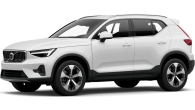



.png)

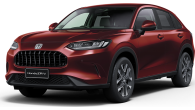
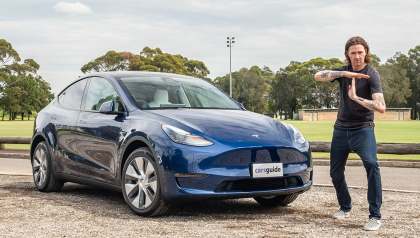
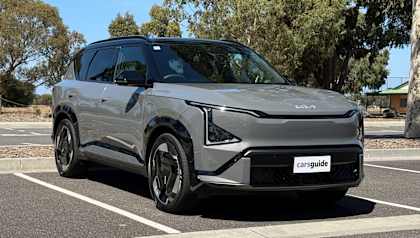


.jpg)

